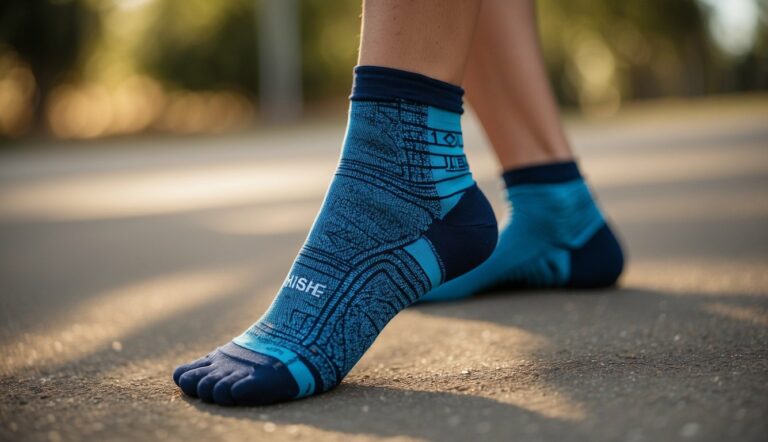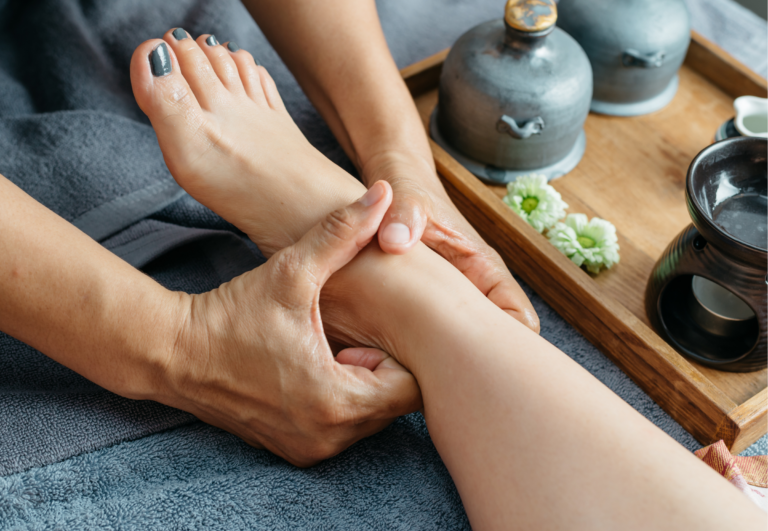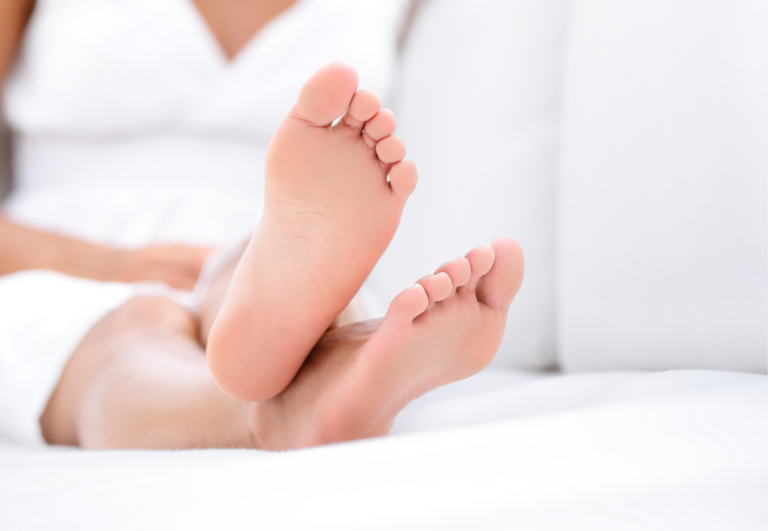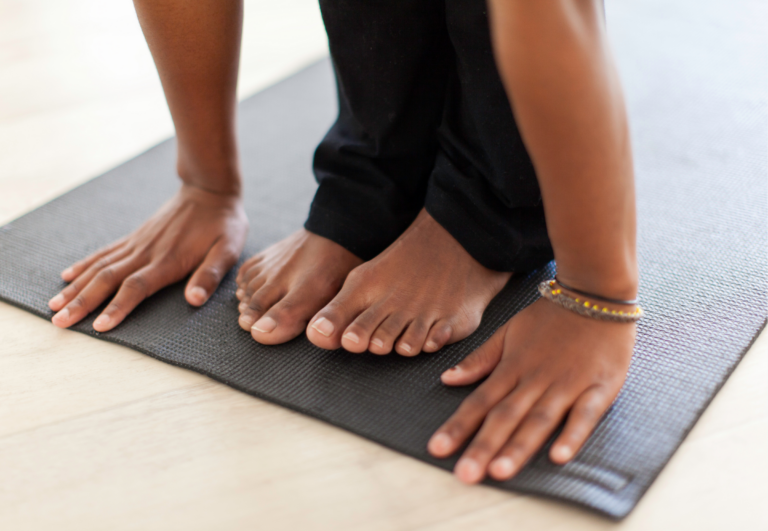How to Use Toe Spacers for Foot Strengthening: A Guide to Enhanced Stability and Mobility
Toe spacers are simple tools designed to improve foot strength and health by properly aligning the toes. From my experience, regular use of these spacers not only enhances the overall comfort of your feet but also plays a crucial role in maintaining their structural health. By separating the toes, spacers help stretch and strengthen the intrinsic muscles of the feet, potentially leading to better balance and posture.
Incorporating toe spacers into your daily routine can be a game-changer for those who spend long hours on their feet or frequently wear tight shoes. The gentle separation they provide can alleviate the stress on toe joints and muscles, promoting better circulation and preventing common foot ailments. I’ve found that toe spacers offer a straightforward approach to foot care, serving as a foundation for healthy foot mechanics.
Benefits of Toe Spacers for Foot Health
Toe spacers are an effective tool I often recommend for strengthening and improving overall foot health. By gently separating the toes, they encourage proper toe alignment which can enhance balance and posture. Proper alignment is also crucial in distributing pressure evenly across the foot, reducing the risk of pain and deformities, such as bunions.
Regularly using toe spacers can lead to improved mobility in the toes and feet. This is particularly beneficial for those who wear tight or constrictive shoes that limit natural toe movement. By allowing the toes to stretch, the spacers foster flexibility and help maintain the foot’s natural alignment.
Wearing toe spacers also bolsters foot muscles, aiding in their stabilization and strength. By engaging often neglected muscles in the feet, spacers contribute to a stronger, more robust base that can support your body’s weight better.
Here’s a simple list of the core benefits:
- Toe Alignment: Corrects and maintains natural toe positioning.
- Balance: Enhances stability by allowing proper foot muscle engagement.
- Flexibility: Encourages toe movement, aiding in prevention of stiffness and rigidity.
- Strength: Strengthens intrinsic foot muscles through separation and alignment.
- Mobility: Improves overall foot mechanics, contributing to smoother gait.
In my experience, incorporating toe spacers into a foot care regimen is a small yet impactful step towards fostering healthier feet. Remember, while toe spacers can provide numerous benefits, they are not a substitute for professional medical advice. If you have ongoing foot concerns, it’s best to consult with a healthcare provider.

Selecting the Correct Toe Spacers
When choosing toe spacers, it’s essential to consider the material. Silicone and gel are popular choices due to their soft and flexible nature, making them comfortable for extended wear. Materials like silicone gel offer durability and can conform to your toes, which is beneficial for attaining toe splay—the natural spreading of your toes that can enhance foot strength.
Selecting the right size is crucial for effectiveness and comfort. Toe spacers should fit snugly without causing discomfort. If you have diabetes or sensitive feet, consult with a foot care specialist to ensure you choose a material that won’t irritate your skin.
Consider the design aspects that cater to your footwear. Some spacers are slim enough to be worn with shoes, allowing for continuous foot strengthening throughout the day. Below is a quick reference for selecting toe spacers:
| Consideration | Suggestion |
|---|---|
| Material | Look for soft, flexible materials like silicone or gel. |
| Size | Ensure proper fit—neither too tight nor too loose. |
| Footwear | Choose design compatible with your daily shoes. |
| Foot Condition | If you have sensitive feet or diabetes, prefer medically recommended designs. |
In my experience, Correct Toes is a reputable brand known for its design that promotes natural toe alignment. When wearing any toe spacers, give your feet time to adapt to them, starting with short intervals and gradually increasing the duration of use to promote foot muscle strengthening. Remember, while I’m well-versed in toe spacer usage, always seek professional advice for personalized recommendations.
Proper Usage and Techniques
When using toe spacers, the goal is to encourage proper alignment and stretching of the toes. As an avid user, I’ve found a step-by-step approach helps in the effective use of toe spacers:
Preparation:
- Begin with clean feet, ensuring that your toes are dry to prevent any slipping.
- Choose the right size of spacers to avoid discomfort; they should fit snugly but not too tightly.
Insertion:
- Gently place the toe spacers between each toe, starting with the big toe and working your way down to the little toe.
- Make sure the spacers sit comfortably at the base of the toes.
Active Use:
- Engage in foot strengthening and stretching exercises while wearing the spacers.
- I recommend using them during yoga or while practicing sports that don’t require shoes to enhance foot mobility.
Duration:
- Start with short periods of use, about 10-15 minutes, and gradually increase as your toes adapt.
- Overuse can lead to discomfort, so listen to your body.
Maintenance:
- After every use, clean the spacers according to the manufacturer’s guidance to maintain hygiene and durability.
- Inspect regularly for any wear and replace if necessary.
Most importantly, use the spacers consistently as part of your routine. Personally, I include them during my yoga practice to improve toe grip and overall foot strength. While toe spacers can offer many benefits, always stop using them if you experience pain or discomfort, and consult a healthcare professional if necessary.
Incorporating Toe Spacers in Daily Routine
In my experience, daily use of toe spacers can play a significant role in strengthening your feet. Begin by consulting a healthcare professional or podiatrist to ensure toe spacers are appropriate for your specific needs. Once cleared, start integrating toe spacers into your routine gradually.
For stability and balance, I suggest incorporating toe spacers during periods of rest or low activity to allow the joints and tendons in your feet to adjust. Initially, wear them for short periods—about 10-15 minutes—and listen to your body’s response.
Sample Daily Incorporation Schedule:
- Morning: After waking, wear for 10-15 minutes while getting ready.
- Daytime: Use during seated tasks or breaks at work for comfort.
- Evening: Apply after long periods of standing or physical activity to decompress feet.
Athletes may find toe spacers particularly beneficial during post-workout recovery. The separation of toes helps improve the conditioning of foot muscles, which can aid in the enhancement of athletic performance.
Remember that comfort should be your guide; if you feel any discomfort, reduce the wear time. As your feet acclimate, you may increase the duration incrementally. It is important to be patient and consistent for best results.
Cleaning and Maintenance of Toe Spacers
Maintaining the hygiene of your toe spacers is crucial to prevent any foot infections and to ensure they last longer. As someone who regularly uses toe spacers, I find that a simple cleaning routine helps preserve their integrity and function.
Materials: Most toe spacers are made of silicone, gel, or foam, with silicone being the most durable and easiest to clean. Foam spacers are softer, but they may not withstand multiple washings.
Daily Cleaning:
- Wash silicone or gel spacers with soap and warm water after each use.
- Rinse thoroughly to remove any soap residue.
- Leave them to air dry; avoid direct sunlight or heat sources which might degrade the material.
Weekly Deep Clean:
- For a more thorough clean, soaking your toe spacers in a mixture of warm water and gentle soap for a few minutes can remove built-up debris.
- Some spacers can be cleaned with alcohol wipes for quick disinfection.
Tips for Maintaining Durability:
- When putting on or removing your spacers, stretch them gently to prevent snapping.
- Inspect your spacers regularly for signs of wear and tear, which could indicate it’s time for a replacement.
Storage:
- Store your dry toe spacers in a clean, dry place.
- A case or bag can protect them from dust and maintain their shape.
By following these simple steps, you’ll ensure your toe spacers remain clean, sanitary, and functional for regular use.
Addressing Common Foot Ailments with Toe Spacers
Toe spacers are invaluable tools for those struggling with foot pain and various podiatric conditions. I have found them particularly effective in managing symptoms associated with bunions, hammertoe, and corns.
Bunions are bony bumps that form at the base of the big toe. Toe spacers can help by realigning the toes to their natural position, thus alleviating pressure and discomfort.
For those with hammertoe, where a toe has an abnormal bend in the middle joint, toe spacers encourage a straighter alignment of the toes, which can reduce pain and friction inside shoes.
If you’re dealing with corns and calluses, these skin build-ups caused by friction and pressure may find relief through the use of toe spacers. They can prevent toes from rubbing together or against footwear, minimizing further skin irritation.
When used consistently, toe spacers can also support recovery from conditions like plantar fasciitis, a common cause of heel pain. By promoting proper toe alignment, they encourage better weight distribution and foot mechanics, which can ease strain on the plantar fascia.
It’s important not to overlook the potential of toe spacers in helping to reduce inflammation and improve overall foot function. Here’s a quick list of how toe spacers can aid in foot health:
- Bunions: Prevent worsening of bony protrusions.
- Hammertoe: Promote toe realignment.
- Corns/Calluses: Minimize skin irritation caused by friction.
- Plantar Fasciitis: Support better foot mechanics.
Incorporating toe spacers into your foot care routine is simple and can significantly alleviate discomfort from these common foot ailments. Remember, while toe spacers are helpful, they are not a substitute for medical advice or treatment. Always consult with a healthcare professional for persistent or severe foot problems.





